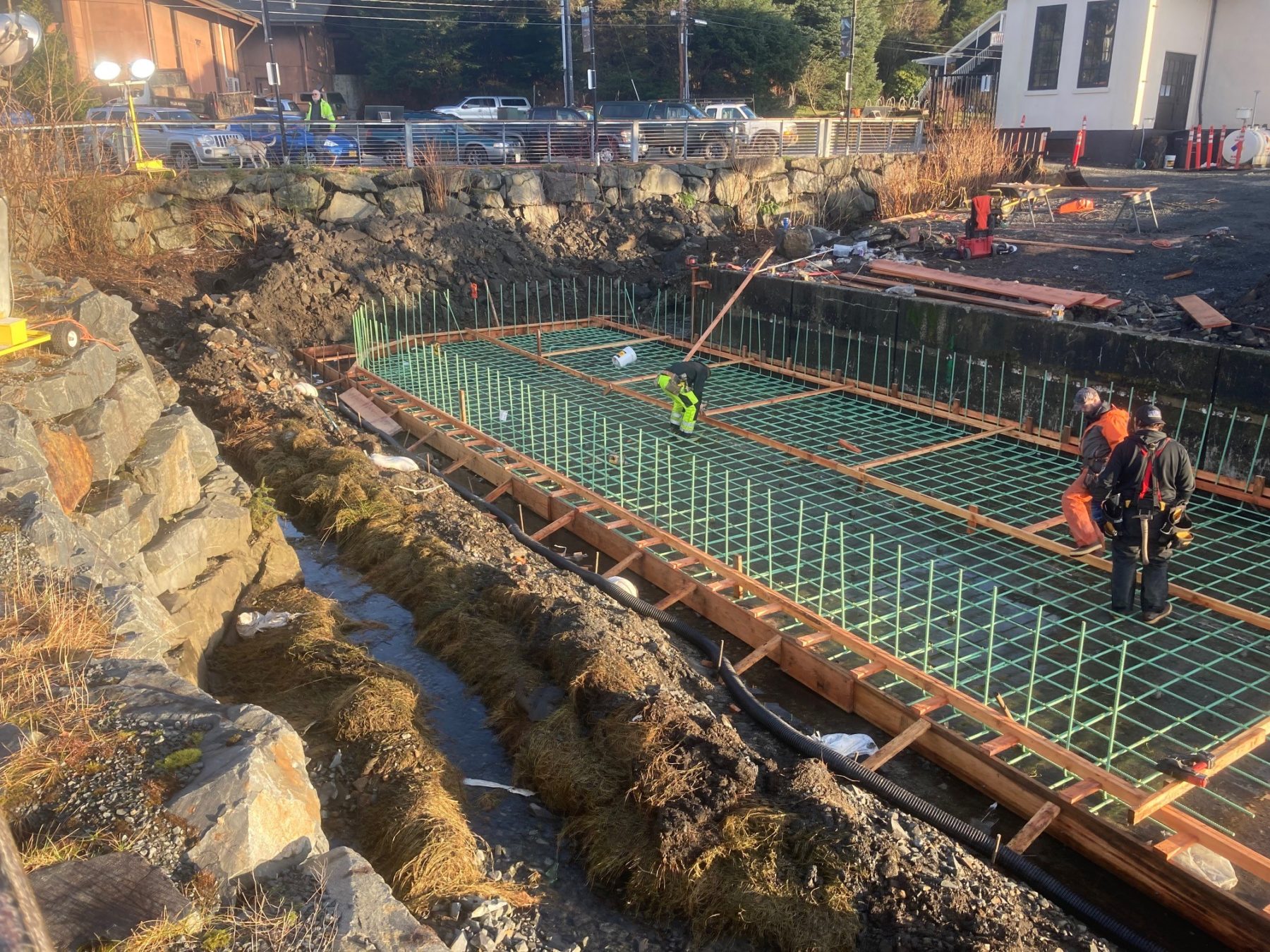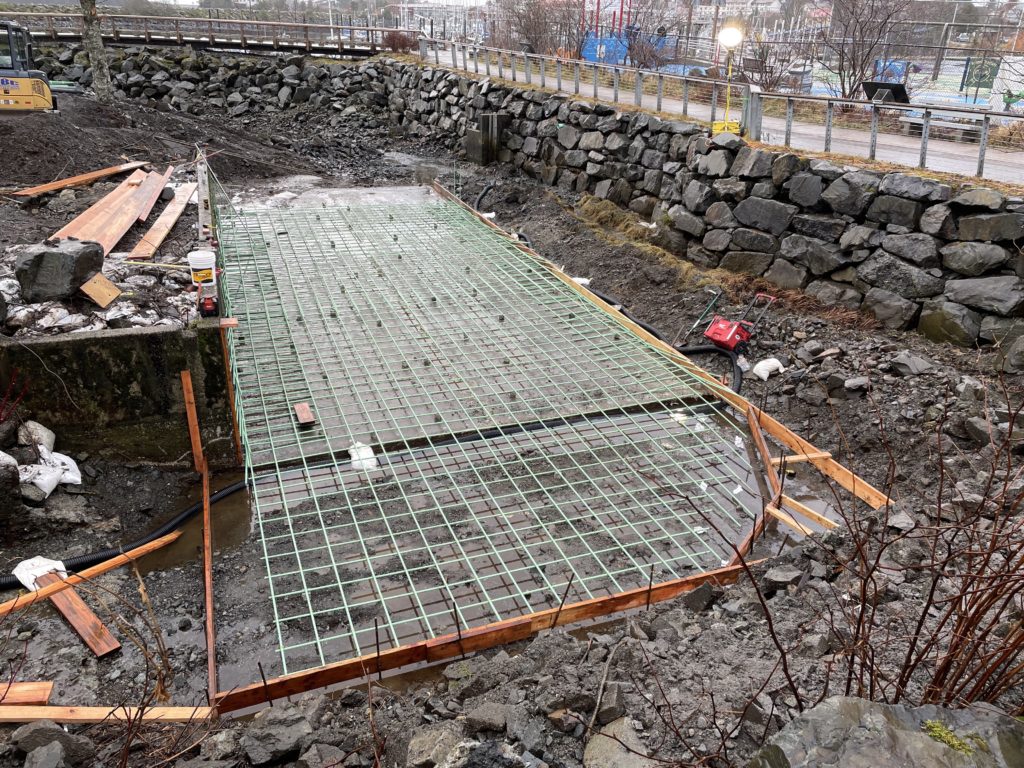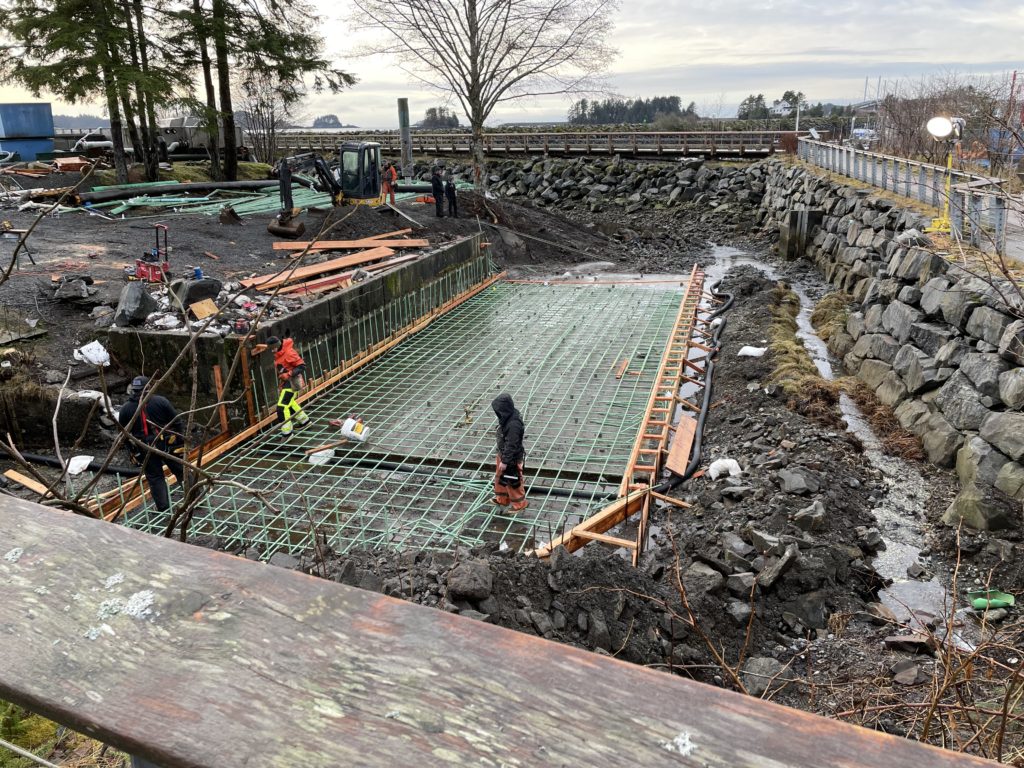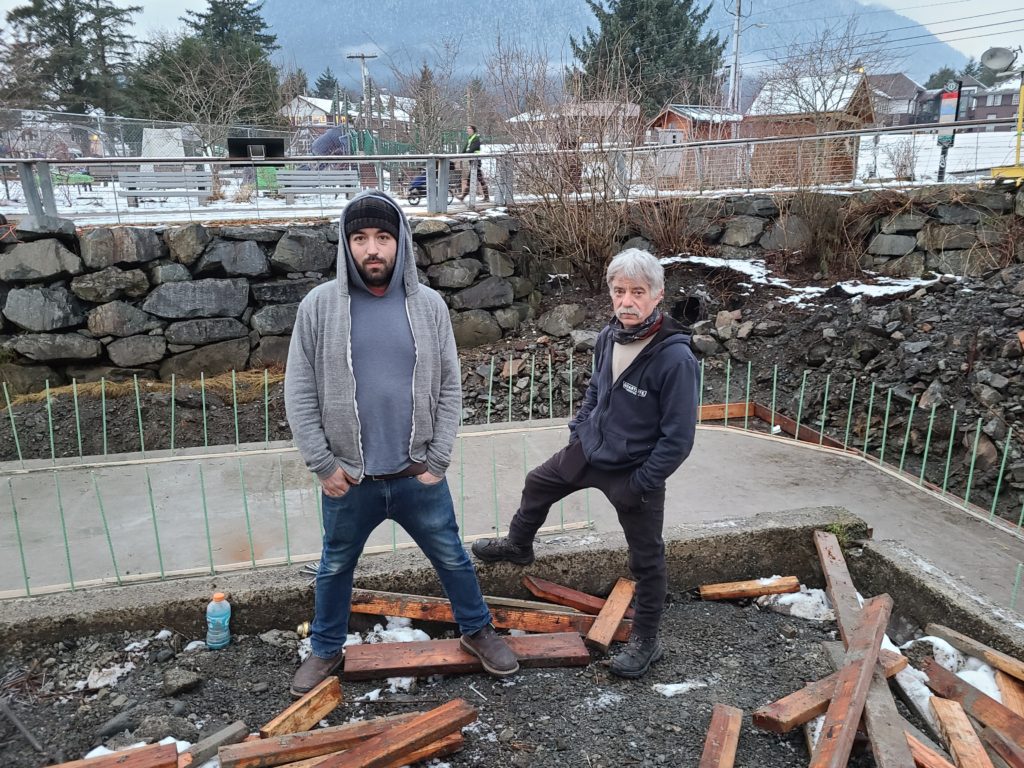
News
News
News
SPIFy Journal – February 2022 update
Written by Karl Cranston Simmons
Construction is progressing nicely and CBC Construction has been battling record rains, freezing temps, and shifting tides. For this month’s edition of the journal, Karl Cranston Simmons, Pacific High Senior and SSSC’s Calvin/Pervis Program Intern will be interviewing key team members to gain their perspective on the who, what, how, and why of the SPIFy project.


For this installment we interviewed Blake Conaway, Facilities Manager, and William Coltharp, Aquaculture Director. Together, they were able to tell us what they’re looking forward to with SPIFy and what it will bring to the Science Center.

To give some context, William “Bill” Coltharp and Blake Conaway both have had great experience with fish hatcheries over their careers. Bill ran the Sheldon Jackson hatchery with students from 1990-1999, and later went on to gain more experience working at the ANSARA Medvejie Hatchery. Blake also has experience with Medvejie, Kalama Falls, and Port Armstrong hatcheries.
As the interview began, we discussed the advantages SPIFy will bring to the Science Center. As Blake and Bill put it, SPIFy will bring greater functionality and efficiency.
“Just about every aspect of it is gonna make my life easier and our crew’s life easier just on the egg take alone, we’ll be able to more or less bring the fish to us, instead of us going to the fish”
Bill later went on to say how many laborious activities will soon be done with the press of a button.
“Everything’s time sensitive in a sense, and it’s also exposure to the sunlight. And you know, there’s a lot of chance to dump the bucket, dump the eggs. And over the years that I’ve worked here, in the past, a lot of eggs have hit the gravel”
According to Bill, many eggs are transported manually with buckets, which can affect survival rates of eggs. As the Science Center utilizes more automated technology, egg survival rates will go up since there’s a lesser chance of human error.
They also went on to mention the challenges that come with building SPIFy, such as oil leaks, bedrock, and where they’re going to build it.
Blake added “The oil was a really big sucker punch … so, I would imagine that we’re not done with surprises like that.”
It’s those kinds of “hiccups” that they said are causing them to cut into the sidewalk and the road during construction. All this will just continuously make construction more complicated and expensive, but it’s necessary as some of the construction includes a fire suppression system, increasing safety.
“The Science Center is kind of unique in the fact that we don’t have a lot of room for expansion, we’re on a city lot in town, and, you know, we’re creatively using the space that we have available to us”
Blake continues, saying the Science Center has limited room for expansion.
“I think that we have enough insight of certain things that work and things that don’t work, and we’re trying to take the best and most updated technology and bring that here … to promote ourselves as this learning center for fish cultures, we found that need to bring ourselves up to the most up to date technology”
According to Blake, as the Science Center strives to be a greater place for education, we need to bring updated technology, like SPIFy.
“One of the biggest challenges is when you come up with an idea, how’s it going to fit with the whole program and the whole science center, you know, as a whole such as tourism, such as research, such as education, and then right down to how does it work for aquaculture and just the basic reason why you have a hatchery here”
Bill shared that when coming up with an idea, it must be determined how the idea aligns with the goals and values of the Science Center.
“The platform when we’re not spawning will be used for researchers, such as Whalefest. I’m sure that’ll be utilized quite a bit. The design of this incubation building will also have a multi purpose room where we can do a lot of things like tagging, egg picking, basically laundry too in some cases”
According to Bill, SPIFy and its new multipurpose room will provide a wider range of research and educational activities, as well as extra space to do more work related activities. Bill continued and said it will also be used for the high school Aquaculture class.
The new spawning facility will have a positive impact on the Science Center, bringing better functionality and efficiency. The Science Center has always been a good place for visitors and students from the community and other places throughout the world to come and learn, and when SPIFy finishes construction those learning experiences and opportunities will only increase. SPIFy will also importantly bring better safety to the Science Center with its automation and less intensive labor. Soon, the Science Center will be a much more advanced fish hatchery.

To keep up on SPIFy and it’s progress and to learn more about the people working to make this happen, make sure to check back into the SPIFy journal to read more interviews.
